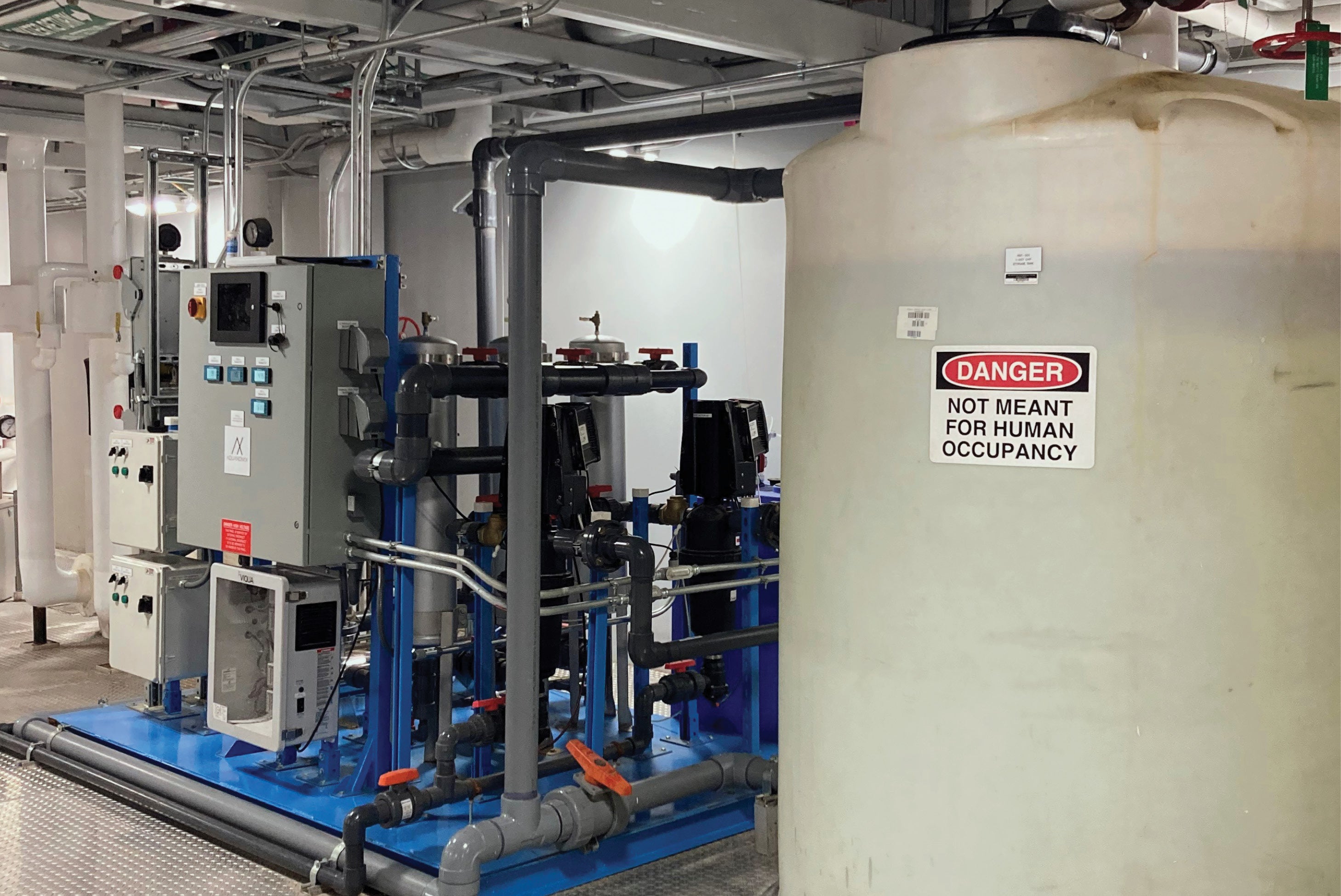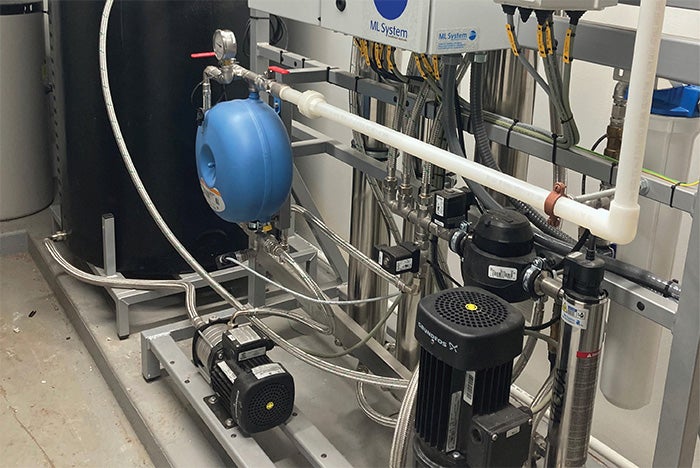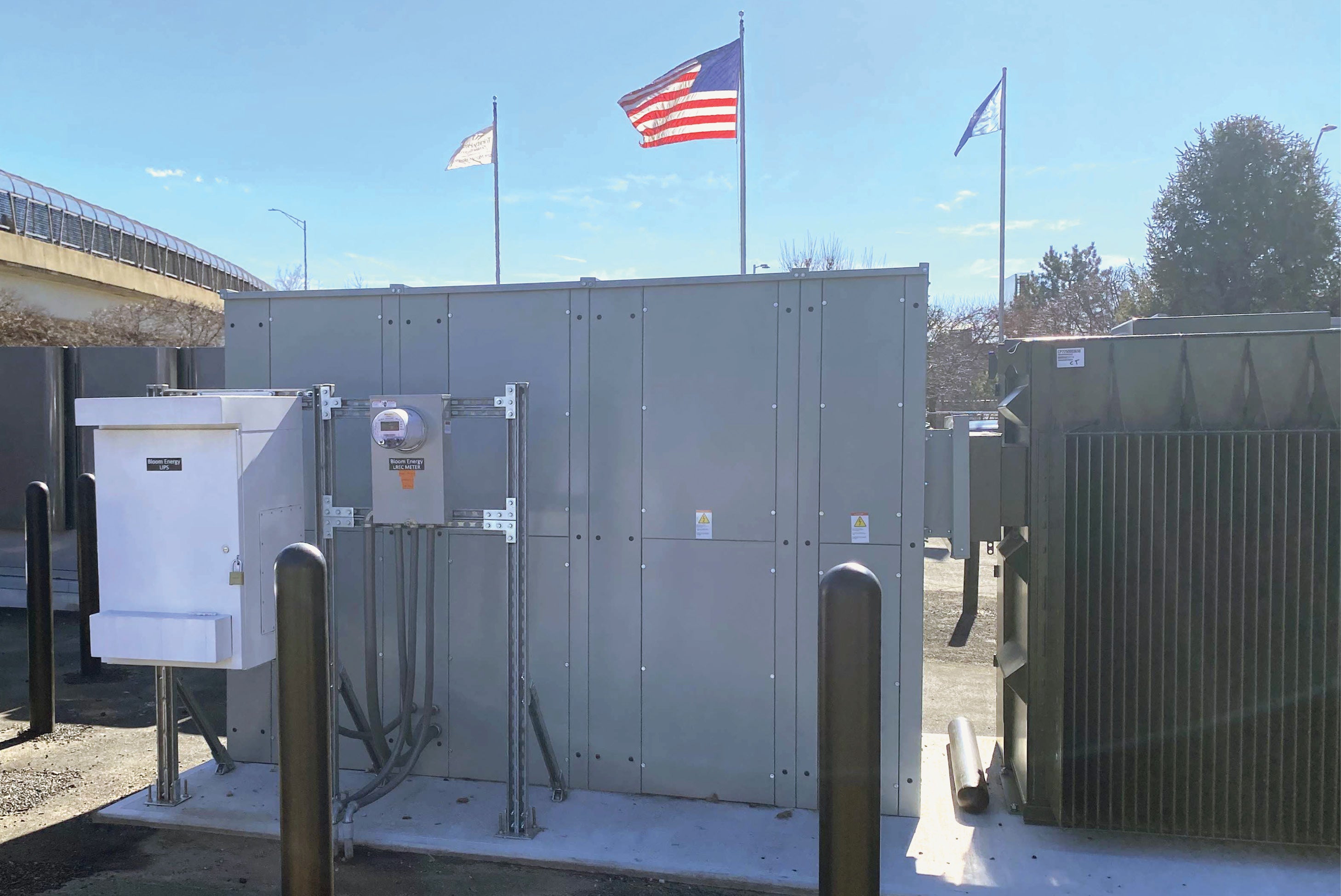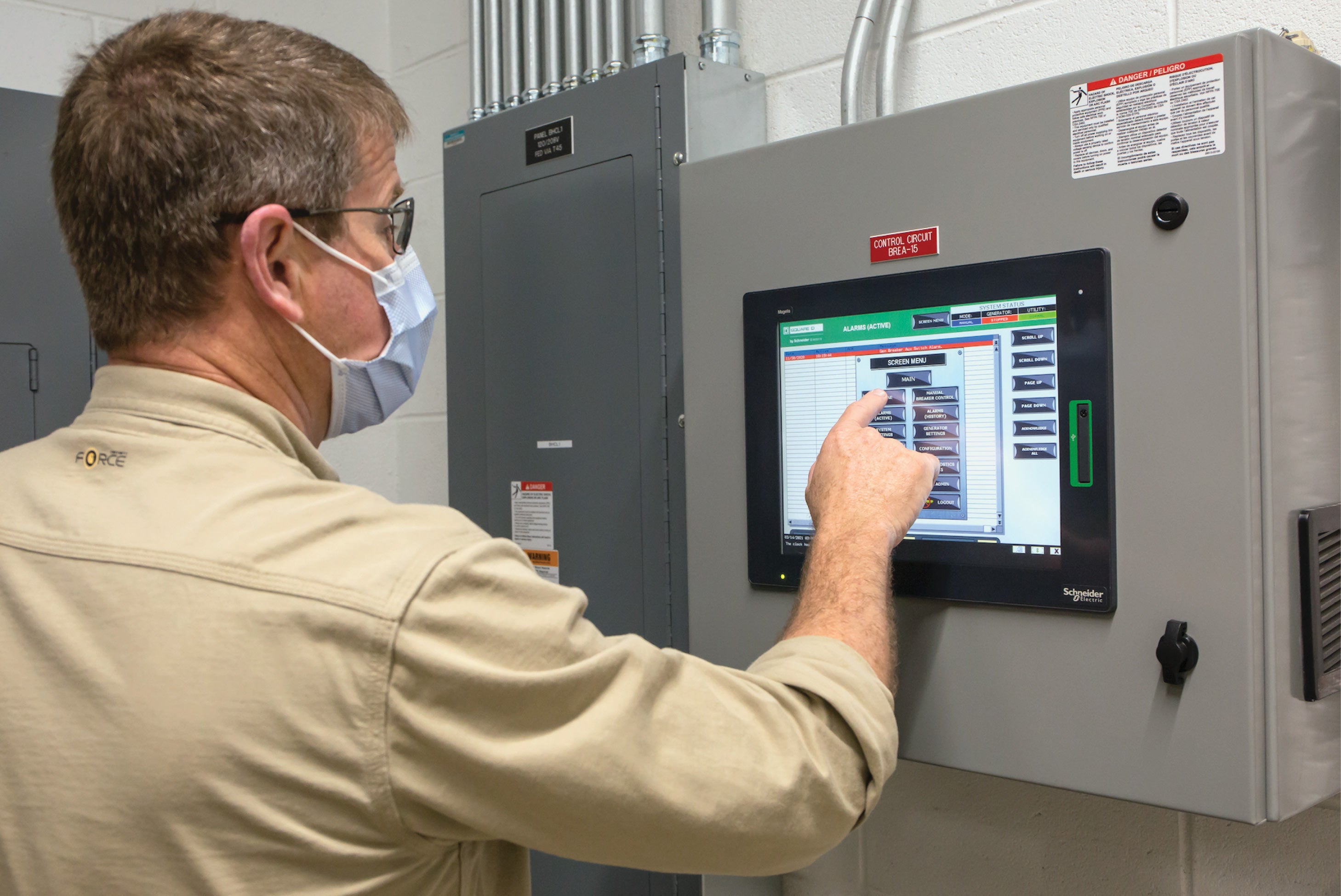Taking a global perspective in decarbonization

Image by Getty Images
As the world recognizes another Earth Day on April 22, health care facilities are contributing with their own decarbonization efforts, such as reducing the use of fossil fuels in favor of renewable energy sources. However, tight budgets and low revenues are making it tougher for most hospitals to continue down the decarbonization path.
With increased pressure from recent governmental regulations, it’s not going to get any easier. For instance, a Senate bill in Maryland requires a 60% reduction in greenhouse gas emissions by 2031 (using a 2006 baseline) for any building over 35,000 square feet. Some states have also started banning natural gas, and hospitals with installed combined heat and power systems using this fuel face another dilemma in finding a suitable replacement.
These issues are front and center in the mind of the American Society for Health Care Engineering’s (ASHE’s) Kara Brooks, MS, LEED AP BD+C, senior associate director of sustainability. “Hospitals everywhere are being called on to take collaborative action,” Brooks says. “They recognize the need to decarbonize, but it very quickly becomes a question of what resources are available and how best to utilize them.”
In spite of these ongoing challenges, hospitals are forging ahead to find ways to finance their decarbonization projects. Strategies vary by organization, but they tend to share the same goal: optimize energy conservation and promote sustainability.
“There isn’t a cookie-cutter approach that will work for all hospitals,” Brooks says. “But we do encourage that they take on the smaller issues first. Then they can start to gain momentum and see some return on their investments.”
Return on investment
Finding low-cost or no-cost opportunities for reducing energy use is the first step since these projects can pay for themselves and usually have a quicker return on investment (ROI). A quick ROI usually gets the attention of the chief financial officer (CFO). Making the connection between energy reduction and decarbonization is also important in gaining approval for projects.


A rainwater harvesting system and reverse-osmosis adiabatic humidification equipment installed at University of Maryland Medical System.
Images courtesy of UMMS
To do this, a comprehensive assessment of a facility’s energy performance and infrastructure is required. For instance, after CommonSpirit Health (the largest Catholic health system and second-largest nonprofit hospital chain in the United States) conducted assessments in all of its locations and deployed a systemwide retrocommissioning program, it discovered a backlog of infrastructure requiring upgrades. This information helped prioritize investments with decarbonization in mind.
Some hospitals rely on treasure hunts and other programs, such as those by the Environmental Protection Agency’s (EPA’s) ENERGY STAR® or ASHE (see the sidebar on page 24 for more information on ASHE’s new HealQuest™ program).
Timothy Peglow, PE, SASHE, MBA, ME, associate vice president of patient care and prevention facilities at the University of Texas MD Anderson Cancer Center, believes treasure hunts are a great option because they are inexpensive and can find hidden opportunities. Elsewhere, the University of Maryland Medical System (UMMS) uses ASHE’s Energy to Care® Dashboard tool, which tracks energy and water usage, to help with its energy reduction efforts.
“Our free Energy to Care Dashboard helps hospitals establish a baseline,” Brooks says. “Progress can then be easily monitored, and data can be imported and exported to EPA’s ENERGY STAR Portfolio Manager®.” Atrium Health, Charlotte, N.C., conducted a successful ENERGY STAR treasure hunt at one hospital that involved more than 20 people, including the president. Team members were empowered to think about and reduce energy use. Such energy efficiency efforts have helped Atrium Health earn ENERGY STAR Partner of the Year five years in a row. The awards also help spread a culture of energy efficiency and sustainability. “These awards can instill confidence in leadership to provide funding,” says Michael Roberts, PE, SASHE, CHFM, SrHE, director of energy services at Atrium Health. “They get you a seat at the C-suite table. However, you still have to present your case, which is often evaluated with other needs.”
Says Roberts, “Early on, we received a number of ASHE Energy to Care awards, and [these highlights] were included in capital requests along with the financial case. Receiving the ENERGY STAR Partner of the Year Award has engaged our top leadership and provided confidence in our program, especially with recent discussions around carbon neutrality and net-zero emissions.”
The ASHE Energy to Care awards help foster friendly competition among ASHE chapters, which compete against one another for energy savings. In 2022, ASHE gave out 169 individual awards, but more than 500 buildings sign up every year to win the Energy Cup trophy. The ASHE Energy to Care Dashboard has been vital to tracking the metrics needed to win.
“It’s been a great tool that health care facilities get excited about,” Brooks says. “Sites that continuously perform well can earn the Sustained Performance Award. The highest honor goes to recipients of the Sustainability Champion Award, which recognizes multiple facilities.”
Alongside award ceremonies are regular audits. Mass General Brigham, based in Boston, conducts ASHRAE Level 1 audits of select facilities, in combination with comparative energy use intensity (EUI) benchmarking against similar buildings. If there’s a significant deviation in EUI, an audit is conducted.


A fuel cell installation at Trinity Health was leveraged through a power purchase agreement.
Images courtesy of Trinity Health
“We then put together an energy conservation measure project and present it to the utility for their input to determine if they can incentivize it,” says Jason D’Antona, PE, LEED AP, director of engineering and utilities at Mass General Brigham. “If we decide the project is worthwhile, we’ll implement it.” Some of Mass General’s projects are self-funded if they meet certain criteria for ROI.
Trinity Health, Livonia, Mich., one of the largest not-for-profit Catholic health care systems in the country, launched an energy reduction program in 2023. Information from all ministries was collected to develop a “Top 10 Energy Project” list. This list was then filtered to projects with ROIs under four years and was presented to leadership for capital consideration.
G. Andy Woommavovah, CHFM, Trinity’s system leader of facilities maintenance, energy and infrastructure planning, design and construction, adds, “The challenge is we have addressed most of the low-hanging fruit, so the ROI on major mechanical equipment is not always attractive. Fortunately, our leaders are thinking differently and understand there will be some additional cost to carbon-reducing projects that they must consider.”
For capital projects, it’s also critical to speak the CFO’s language during the project’s financial review. “Have a clear understanding of the CFO’s key performance indicators (KPIs) and how they define a successful project,” says Mass General’s D’Antona. “We use this information to craft a proposal. In the last year alone, we’ve implemented close to 35 or 40 projects with a total net operational savings of more than $1 million a year. And we’re trying to hit that every year.”
Exploring funding options
After hospitals have reduced the carbon footprint in their facilities, adding renewable energy sources like solar is the next step on the path to decarbonization. Many solar installations are funded with power purchase agreements (PPAs), where the solar company installs, operates and owns the system.
The user pays the per kilowatt price for whatever electricity is produced. Fortunately for UMMS, its 10-year-old, 10-acre system hasn’t degraded in performance as expected. UMMS is now looking at installing solar canopies on parking lots and purchasing hydropower with PPAs.
Trinity Health has leveraged the use of a PPA to successfully deploy a fuel cell project that included a 1.5-megawatt unit at St. Mary’s Hospital (Waterford, Conn.). Trinity is considering renewable projects in California and the Midwest as well, relying on PPAs and new incentives offered by the Inflation Reduction Act (IRA).
Mass General Brigham is also looking at fuel cells as well as geothermal energy. For off-site wind, it uses virtual PPAs, which do not involve the physical delivery of energy from the vendor. In Texas, the situation is somewhat different. The MD Anderson Cancer Center has group purchasing arrangements for energy from the University of Texas system and is looking to purchase additional renewables.
Though most decarbonization projects are self-funded or receive internal funding from the capital budget, some hospitals have taken advantage of other incentives, whether from the local utility or elsewhere. UMMS has started to take a closer look at the IRA to better utilize the opportunities it provides (see sidebar on this page for more information on some of its incentives).
Trinity Health recently funded a major LED project at a 1-million-square-foot facility that may be eligible for the IRA’s 179D incentive. This incentive allows a deduction for a portion of the cost (subject to a maximum cap of $5 per square foot) of energy-efficient measures, including interior lighting, HVAC and building envelope upgrades. Energy usage needs to be reduced by 25% (previously 50%).
Trinity is investigating how 179D works and is partnering with its LED supplier to apply for this incentive. The 179D initiative is scalable, thanks to additional bonuses that include energy communities and prevailing wages. However, it’s important to note that 179D is not a direct pay and is not transferrable.
Trinity’s Woommavovah recommends engaging with an expert partner that can help navigate the IRA and other tax incentives. Adds Woommavovah, “Now that the incentives are available to not-for-profit health care, you will have the ability to overlay them into your ROI calculations.” Like UMMS, Trinity hopes to eventually leverage the full range of IRA opportunities for its projects.


Atrium Health staff checking power consumption rates on an energy plant’s main switchgear and converting existing T8 fluorescent lighting to LED.
Images courtesy of Atrium Health
Investigating IRA funding is a must, believes Atrium Health’s Roberts, because such incentives should reduce project payback periods, increase internal rate of return and make projects more viable. “We are already familiarizing ourselves with the IRA and having discussions with consultants and vendors that may have experts in this field,” Roberts says. “Even if the funding is not pursued, you need to be educated on why or why not, as this will be asked during project funding approval and could hold up the approval process.”
One major challenge is convincing hospital boards that it’s worth investing money for future projects that don’t have an immediate payoff. Showing them how the investment will provide operating savings (as well as tax credits) may help. Atrium Health already includes utility incentives in its payback and rate of return calculations, which is instrumental in obtaining funding opportunities.
Hospitals might look to the Department of Energy’s Better Buildings program, which offers additional resources to those seeking decarbonization strategies. One such resource is the Financing Navigator. This online tool helps organizations find the appropriate funding for their projects and provides information about traditional financing options (such as leases and loans), as well as more specialized opportunities (such as energy savings performance contracts). Users can browse the Financing Navigator to locate funding based on their needs, and can specify parameters like project cost, business sector, performance risk and more.
Kuakini Medical Center in Honolulu implemented an efficiency services agreement that pays for 100% of project construction and ongoing maintenance, eliminating upfront costs. The Better Buildings program offers toolkits for implementing these types of agreements as well as other financing tools.
Performance contracts and green revolving funds are a potential good fit for funding multiple projects across campus at larger health care facilities. Smaller hospitals can take advantage of them, too. After Russell Regional Hospital in Kansas implemented a performance contract, it earned an ENERGY STAR score of 100, according to Brooks.
ASHE is keeping on top of the IRA so it can provide neutral guidance, including the best way to find access to funding. MD Anderson’s Peglow is spearheading ASHE’s decarbonization guide, which will be available later this year.
Previously, ASHE published a monograph detailing best practices for financing energy sustainability, such as strategic investments and the adoption and customization of a carbon-neutral framework. The monograph, titled “Best Practices for Financing Energy Sustainability,” is available on ASHE’s website.
Connect and collaborate
Those involved in obtaining financing can make their jobs easier by networking with their peers and joining relevant committees to share resources, as Peglow and others have done. Richie Stever, MHA, CHFM, CLSS-HC, LEED AP, UMMS’s vice president of real estate and construction, is involved with several committees, which allows him to brainstorm solutions with colleagues from across the country.
Atrium Health’s Roberts recommends attending ASHE and other relevant conferences. Not only do these provide networking opportunities, but they can also provide valuable education on financing options. Advises Roberts, “Familiarize yourself with third-party financing, and if capital is not available, discuss with the finance department the possibility of other funding models.”
Connecting with others also helps to keep an eye on what other organizations are doing and learning about the different strategies that exist, whether they’re for energy reduction or financing. Due diligence is critical for making sure these strategies will work in the organization and that ROIs are met, especially if pursuing new technologies. The learning curve can be steep, but it will be worth it in the end.
For those just starting down the path of decarbonization, Atrium Health’s Roberts recommends engaging with experts who have a proven track record in the field to assist with the business plan. “Look for big-ticket items that have a major impact and good payback. Demonstrating success on similar projects will boost confidence and convince the CFO you know what you’re doing,” he says.
The bottom line
When hospitals are committed to decarbonization and sustainability, it leads to new initiatives for reducing actual carbon emissions by lowering energy consumption. After these emissions are reduced, investments in other decarbonization strategies can take place.
But it’s about more than just emissions. “There’s a social cost of carbon,” says UMMS’s Stever. “A small emissions reduction can make a significant impact on the communities that surround us. So, it’s bigger than what’s inside the building and the patients that we’re caring for today. It’s about the patients who we may not have to care for tomorrow.”
Laurel Sheppard is a Hilliard, Ohio-based freelance writer for ProWrite.




